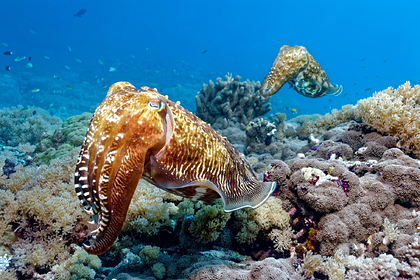
Scientists from the USA and Great Britain have shown that cuttlefish have a sufficiently developed intellect and their intelligence is comparable to that of a human child. The researchers' article was published in the journal Proceedings of the Royal Society B.
Cephalopods have gone through a new version of the marshmallow test, which aims to study delayed gratification, where a person or animal is able to forgo immediate benefits in favor of greater future rewards. In a classic experiment conducted at Stanford University in 1970, children were asked to get one marshmallow right away, or wait 15 minutes and get two marshmallows. Those subjects who successfully passed the test later demonstrated a higher level of education and scored more points when admitted to universities.
Some animals are also able to pass the marshmallow test, which is a sign of high intelligence, including primates, dogs, and corvids. Cuttlefish can refrain from eating crab meat in the morning if they are told they are getting shrimp for lunch. However, in the new article, the scientists noted that previous experiments cannot determine whether cephalopods are actually capable of delayed pleasure or whether it is a reaction to the availability of food.
In a new experiment, six cuttlefish were placed in a special tank with two closed chambers with transparent doors. There was food in the cells: a piece of raw shrimp in one, and live glass shrimp in the other. The doors were marked with symbols that the cuttlefish could identify. The circle meant that the door would open immediately, and the triangle – after a certain period of time. If the cuttlefish chose a piece of raw shrimp, food from the other chamber was immediately removed.
It turned out that all cuttlefish could wait 50-130 seconds to get the best food. This is comparable to the results obtained for vertebrates with large brains such as chimpanzees, crows and parrots. Scientists believe that the capacity for delayed gratification developed in cephalopods due to their predatory behavior. Most of the time, they camouflage themselves, waiting for food, but when hunting for prey, cuttlefish become noticeable to other predators.

